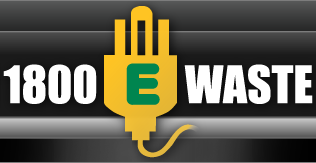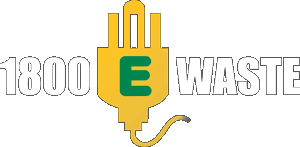When it comes to electronic waste, it’s quite clear that we need to do something soon. The United Nations estimates that up to 50 million tonnes of electronic waste are thrown away globally each year, and the amount ending up in landfill is on the rise. In 2009, 234 million items of ewaste were on their way to the tip in Australia alone, which was 41 million more than was estimated.
A report prepared by The Total Environment Centre and Environment Victoria predicts that without an introduction of an ewaste recycling programme, the amount of ewaste in Australian landfills will treble by 2020 and be close to 700 million items. So what is the future of our Ewaste and what is being done to combat our very serious electronic waste problem?
National Waste Policy – “Less waste, more resources”
In 1992, the Australian government made progress towards their waste management policies with the implementation of the National Strategy for Ecologically Sustainable Development. This committed Australia to reduce the environmental impact of all waste and improve the management of hazardous waste. This would underpin the policies and programmes implemented by the government over the past 20 years and formed the basis for the Environment Protection and Heritage Council, which was created in 2002.
In 2008, Environment Minister Peter Garrett joined forces with the EPHC to develop the National Waste Policy; the policy acknowledges that, whilst the National Strategy of ’92 was successful in implementing kerbside recycling schemes and raising some awareness of sustainable waste management, change was still needed.
Given the changing nature of the waste stream, the capacity for continued growth in the recovery of materials is constrained under current policy settings. (p.1
In light of the changing “waste stream”, mainly the influx of hazardous wastes from electronic goods, the National Waste Policy sets out to bring the strategy up to date and set out a “clear direction” for the next 10 years.
The National Waste Policy aims to adhere to international obligations such as the Basel Convention and the Stockholm Convention, and reduce the generation of waste and ensure that waste treatment, disposal, recovery and re-use is safe and environmentally sound. One of the main aims of the NWP is to educate consumers on the risks associated with hazardous wastes and stress the importance of correct management and disposal. They aim to do this with the adoption of Product Stewardship Schemes, which focuses on producer responsibility for the correct disposal of hazardous waste – including electronic waste.
The Product Stewardship Scheme – the future for recycling televisions and computers.
Under the proposed Product Stewardship scheme, responsibility for recycling will be passed back to the manufacturer who will be forced to pay some sort of tax on all televisions and computers imported into Australia to cover the cost of future recycling. The government have endorsed the scheme and hope to have it running by 2011.
The PSA is one of the most detailed schemes endorsed by the government to date and would provide future generations with easily accessible recycling facilities for televisions. The scheme would be funded by financial contributions from importers – not consumers or the government – and with PSA members already accounting for 70% of imported televisions; companies are already willing to foot the bill. The scheme will also benefit the economy and residents in regional areas by providing “direct economic benefits from job creation in all states”. Globally, similar schemes have been in operation since 1996, proving that it can work and that Australia is finally catching up.
It will, however, need complete endorsement and monitoring from the federal government to ensure participation and fair practise from all importers. There is also the worry about orphan and historical television sets, in other words electronic equipment whose manufacturers are no longer in operation. These are clearly going to the most likely candidates for landfill as consumers upgrade their equipment, but who will pay for their disposal? The PSA aim to have the scheme up and running by 2011; an estimated 2 million units are discarded every year, so 2011 could already be too late.
1800Ewaste – Electronic Waste Recycling for NOW
It seems that government ideas are certainly in planning, but constructive legislation is yet to be put in place. While we wait for our government to enforce some much needed plans to encourage consumers and businesses to recycle their hazardous waste, private companies are taken the initiative to tackle Australia’s ewaste problem head on.
As Australia’s leading electronic waste collection and recycling service, 1800Ewaste have been fighting the ewaste build up in landfills for more than three years and have helped divert 310 tonnes of electronic waste from landfill so far. Our service is fast, reliable and aims to divert 95-98% of everything we collect, by weight, from landfill. To find out how you can be one step ahead of the government when it comes to responsibly disposing of your electronic waste, call us today on 1800 392 783.
References National Waste Policy – “Less Waste, More Resources” November 2009

